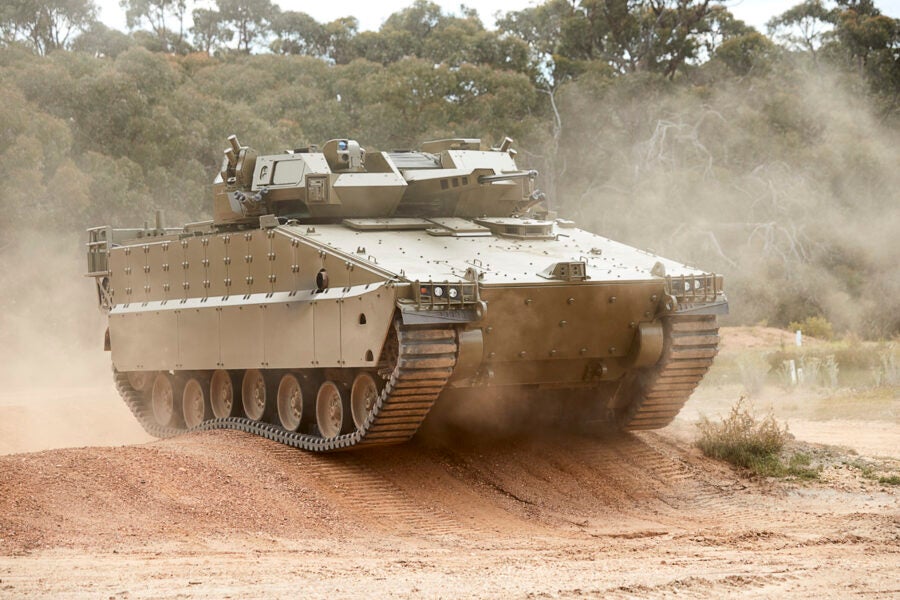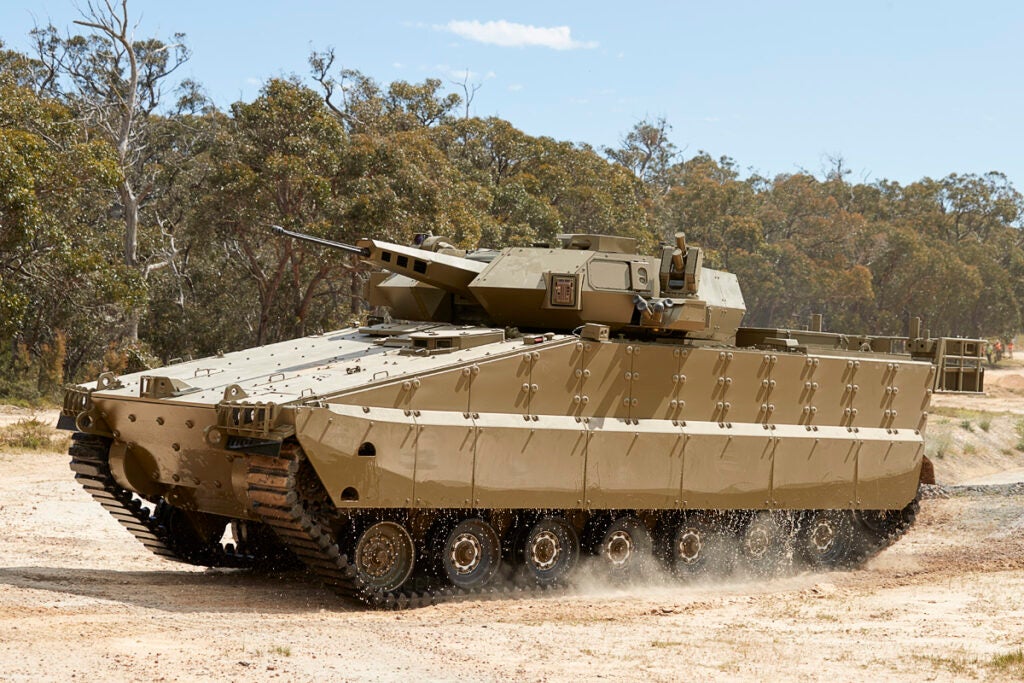
After reaching the finale of the Australian Land400 bid with its Redback infantry fighting vehicles, Hanwha Defense Australia will support the Oshkosh Defense-led consortium (including Hanwha Defense USA) in the US Optionally Manned Fighting Vehicle project. Norbert Neumann talks to the company about the support it provides to its US counterparts and other Australian efforts.
As the US Army’s Optionally Manned Fighting Vehicle (OMFV) programme’s contenders continue to develop their vehicles, Team Oshkosh receives further reinforcement in a form of consultation with Hanwha Defense Australia (HDA). The company will share the experience gained in the Australian Land400 competition, which seeks the country’s next infantry fighting vehicle (IFV).
In Australia, the face-off is between Hanwha’s AS21 Redback IFV and Rheinmetall’s Lynx IFV, after HDA and Rheinmetall Defence Australia submitted their final offerings last October for the Australian Army’s bid.
In the US OMFV effort, besides American Rheinmetall Vehicles (ARV), the Oshkosh Defense-led consortium is up against Point Blank Enterprises, BAE Systems Land and Armament and General Dynamics Land Systems teams.
Readback chassis
The Oshkosh Defense OMFV consortium consists of Pratt Miller Defense, Hanwha Defense USA, Rafael Advanced Defense Systems, QinetiQ and Plasan. HDA has not become a signatory of the teaming agreement, but the company is sharing its experience on the Readback chassis with Hanwha Defense USA.
A HDA spokesperson tells Global Defence Technology: “The Redback is custom-designed from the ground up. The Oshkosh Defense OMFV consortium will work closely with the US Army to understand and analyse their challenges and explore solutions. This collaboration will allow the consortium to apply next-generation technologies and advanced systems to meet their evolving requirements and modernisation needs.”
Similarly to ARV’s approach, where the Lynx only serves as the starting point of the development, the Redback chassis is only the point of departure from which the Oshkosh team will specifically tailor the vehicle to fit the US Army’s requirements.
While the OMFV and Land 400 requirements are different in some respects, Hanwha believes that many of the advanced capabilities could apply to both programmes.
“Each partner will contribute their best-in-class expertise in ground combat vehicles, turrets, armour and autonomy to provide a transformative, next-generation lethality capability for the warfighter,” an Oshkosh Defense consortium spokesperson says.
Hanwha Defense Australia will also deliver a Redback to the Republic of Korea Ministry of National Defense to undergo a performance evaluation that will inform the Korean future infantry fighting vehicle programme.

Hanwha’s success in Australia
At the end of last year, Hanwha Defense Australia signed a contract to supply the Australian Army with its Huntsman AS9 self-propelled artillery system. The company is the first Asian prime contractor succeeding in a major Australian defence bid. The deal is part of defence project Land 8115 phase 1, an effort that will see the acquisition of 30 AS9 Huntsman and 15 AS10 armoured resupply vehicles.
The vehicles will be manufactured at a new Hanwha facility that is set to be constructed in Victoria, Australia. The new vehicles will contribute to the transformation of the Australian Army’s artillery capability.
The AS9 Huntsman was specially developed for Australia and is different from the K9 versions South Korea and Norway use. At the time, HDA managing director Richard Cho told us: “The AS9 is the fourth generation SPH based on the venerable K9 pedigree. The K9 and K9A1 (general one and two respectively) were for the Republic of Korean Army. The third generation was the K9 Vidar for Norway and NATO.”
Cho added that the Huntsman designed for the Australian Army has an increased protection package that covers both active and passive systems, such as the configurable kinetic energy systems, upgraded mini-blast protection and mobile camouflage systems.
Self-protection of the howitzers is enhanced through greater digital situational awareness systems and a remote weapon station. The mobility capabilities are also upgraded to accommodate increased mass.
The production of the AS9 Huntsman will begin at the end of 2024 and the first AS9s are scheduled to be delivered to Australia in the second quarter of 2025. Cho said: “These initial vehicles will then be subject to a rigorous acceptance process before they are introduced into service. The last of the AS9 vehicles are scheduled to be delivered to Australia in the second quarter of 2027.”
Australian steel
Hanwha Defense joined forces with Australian steelmakers to build armoured combat vehicles and self-propelled howitzers for international markets. The company said it signed a memorandum of understanding with Bisalloy Steels to prevent supply chain issues for the Redback and the K9 Self-Propelled Howitzer. Bisalloy Steel is one of the Australian industrial capability partner firms for HDA.
Hanwha Defense’s spokesperson said the move is significant in showing the company’s commitment to keeping its promise to enable customers to conduct local manufacturing and sustainment enabling sovereignty in what they acquire.
Both Bisalloy Steel and HDA will conduct joint technical analysis and development of integration of Bisalloy steel into the Redback and K9 for exports to Europe and other markets.







